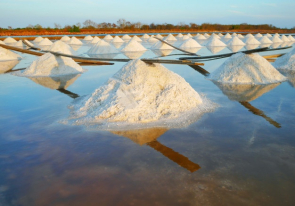Venezuela offers numerous prospective oil blocks to Indonesia
Director General of Oil and Gas at the Ministry of Energy and Mineral Resources (ESDM), Tutuka Ariadji, reveals that Venezuela has offered several prospective oil blocks to Indonesia, but the United States' embargo on Venezuela remains a constraint for further acquisitions in the country.
"They offer a lot of investment opportunities. Most of the investments are affordable, but Venezuela is still under U.S. sanctions," Tutuka said in Jakarta on Tuesday, April 16, 2024.
He said further that the ESDM ministry has remained cautious about expanding cooperation in oil blocks in areas affected by the US embargo. Currently, he cited, the ministry is conducting further studies following the signing of a Memorandum of Understanding (MoU) for oil and gas cooperation between ESDM Minister Arifin Tasrif and Venezuelan Minister of Petroleum Pedo Rafael Tellechea in Caracas on January 18, 2024.
"There are attractive oil blocks, but we cannot take direct action yet. We need to study first, hoping that the conflict there can be resolved," Tutuka said.
Based on data from the BP Statistical Review of World Energy 2020, the world's proven crude oil reserves amounted to 1,733.9 billion barrels at the end of 2019. Out of this total, Venezuela holds 303.8 billion barrels.
The country's reserves at the end of 1999 were recorded at only 76.8 billion barrels. Nevertheless, Venezuela is located above the La Luna formation, a Cretaceous-era organic-rich rock formation ideal for oil deposits.
PT Pertamina Hulu Energi (PHE) has obtained a 20-year contract extension for the Urdaneta West Field Block, a portfolio of oil assets of the state-owned oil and gas company in Venezuela. PHE holds oil block assets in the Urdaneta West Field Block, Venezuela, through a Joint Operating Control (PBO) with Petroregional del Lago Mixed Company. PHE holds a 32 percent participating interest, in cooperation with local partner Petroleos de Venezuela S.A., PDVSA Social.
The previous contract was signed in 2006 with operations scheduled until 2026. The block first started production in 1974. Through this new contract, PHE can develop the oil field until 2046.
"With Venezuela, our focus is actually on unlocking value, as we know Venezuela is a country under sanctions. We hope we can recover from there," Vice President of State energy company PT Pertamina, Wiko Migantoro, said last March.
Previously, Chairman of Commission VII of the Indonesian House of Representatives Sugeng Suparwoto urged PHE to increase investment in the development, exploration, and acquisition of oil fields in Venezuela. The reason, according to Sugeng, is that Indonesia's national lifting realization has been decreasing over the past few years. Until the end of 2023, the realization of oil lifting stood at 605,500 barrels of oil equivalent per day (boepd) or 92 percent of the State Budget (APBN) target set at 660,000 boepd at that time.
Gas lifting realization until the end of 2023 stood at 5.378 million standard cubic feet per day (MMscfd) or 87 percent of last year's APBN target of 6.160 MMscfd. Recently, the 2024 work program & budget (WP&B) for oil lifting targets was agreed upon below the figures set in the state budget. The 2024 WP&B for oil lifting was set at 596,000 boepd, lower than the target set in the APBN at 635,000 boepd.
Meanwhile, discussions with contractor partnership contract (KKKS) holders have agreed on a gas lifting target for 2024 in the WP&B at 5.544 MMscfd. This target is lower than the minimum threshold mandated by the APBN at 5.6785 MMscfd.
"The potential domestically is somewhat challenging, with exploration tending to find gas, so why not go to Venezuela since we know their proven reserves are around 300 billion barrels, the second largest after Saudi Arabia," Sugeng said.
He cited that the realization of the two flagship oil blocks in Indonesia, namely the Rokan Block and the Cepu Block, is currently suffering a decline. However, these two blocks are undergoing advanced development and exploration to mitigate production declines. Yet, the investments required to mitigate the production decline are relatively expensive.
"In Rokan, it's too expensive, imagine the production is 160,000 barrels, but the fluid released is 10 million barrels, which becomes expensive because it requires electricity for steam flooding," Sugeng said.
Tag
Already have an account? Sign In
-
Start reading
Freemium
-
Monthly Subscription
30% OFF$26.03
$37.19/MonthCancel anytime
This offer is open to all new subscribers!
Subscribe now -
Yearly Subscription
33% OFF$228.13
$340.5/YearCancel anytime
This offer is open to all new subscribers!
Subscribe now






